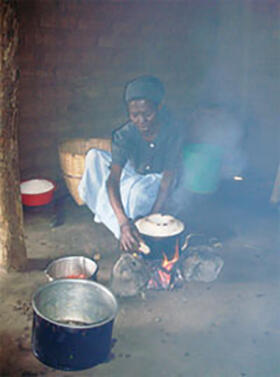
Household air pollution (HAP) from indoor burning of biomass or coal is a leading global cause of infection and death, mostly due to its association with acute respiratory infection in children, chronic respiratory and cardiovascular diseases in adults.
In a recent paper published in the American Journal of Physiology, LSTM’s Dr Jamie Rylance and Professor Stephen Gordon, along with researchers from the University of Georgia (USA), Indira Medical College (India), University of California (USA), Georgetown University (USA) and the National Institutes of Health (USA), outlined the need for biomarkers of exposure and predictors of respiratory disease.
Interventions including new clean cook stoves have significantly reduced exposure to HAP improving health outcomes and may reduce mortality. However, we lack robust, specific and field-ready biomarkers to identify populations at greatest risk, and to monitor the effectiveness of interventions. New scientific approaches are urgently needed to develop biomarkers of human exposure that accurately reflect exposure or effect. This research highlights the global need for such biomarkers, the aims of biomarker development, and the state of development of tests which have the potential for rapid transition from laboratory bench to field use.
Dr Rylance, will be taking this work forward following his successful Wellcome Trust Clinical PhD.
Given the effects of exposure, and the large at risk population, massive effort is being directed globally at HAP exposure reduction programmes, mostly centred on the introduction of improved cook stoves. For example, a multi‐national public-private partnership between the US government and the United Nations Foundation launched the Global Alliance for Clean Cookstoves, which aims to have 100 million homes adopt clean and efficient stoves and fuels by 2020.
LSTM’s Respiratory Infection Group conducts laboratory and clinical research aiming to understand susceptibility to respiratory infection and to develop new preventative and therapeutic strategies.